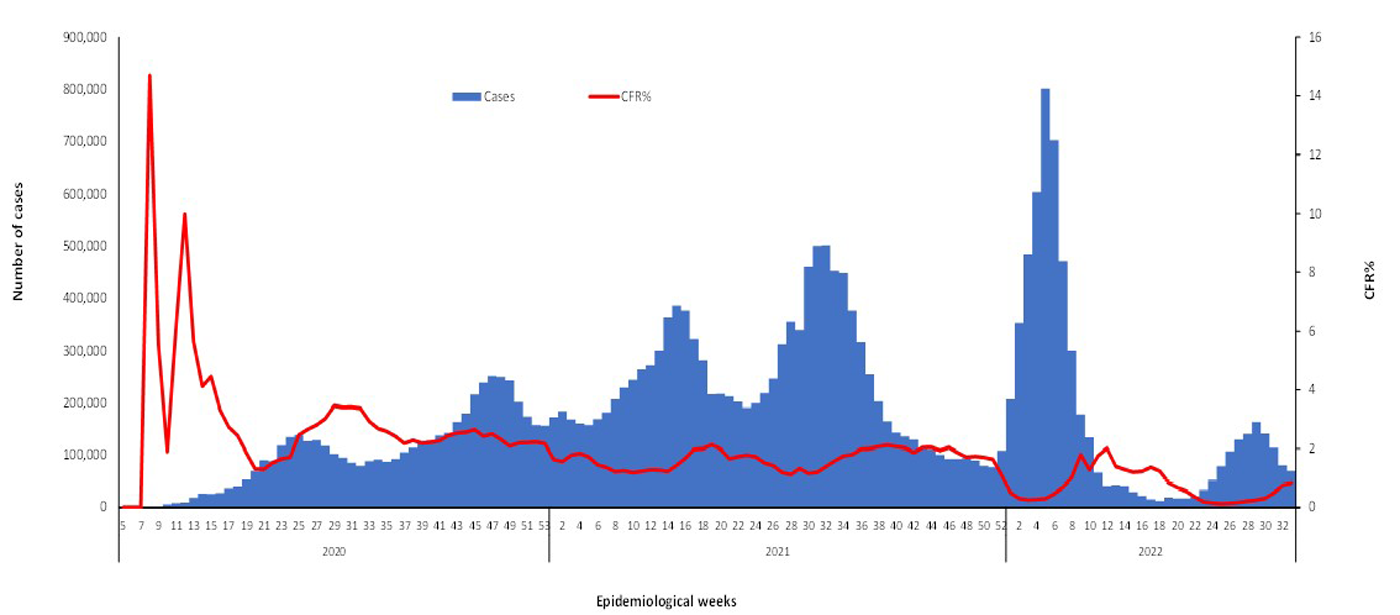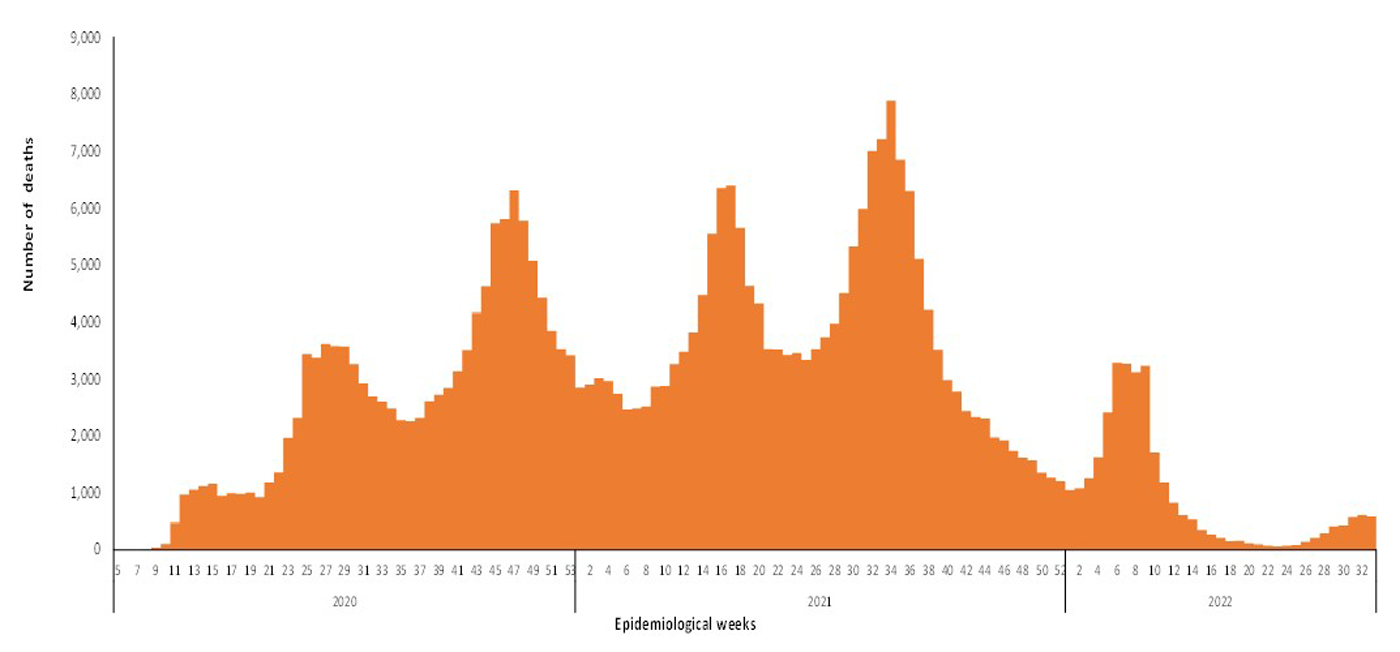The coronavirus disease COVID-19 continues to spread at the regional and global levels. As of 20 August 2022, the global cumulative incidence reached 592 650 798 reported cases and 6 460 197 associated deaths at a case-fatality ratio (CFR) of 1.10%. Meanwhile, the 22 countries of the Eastern Mediterranean Region (EMR) have reported a total of 22 921 467 cases, representing about 3.87% of the global count, with 346 921 associated deaths (CFR 1.51%). Most countries in the Region are in the community transmission phase.
Since the beginning of the outbreak, the country that has reported the highest number of total cases in the Region is Islamic Republic of Iran (7 503 369; 32.74% of the Region’s total), followed by Iraq (2 456 555; 10.72%) and Jordan (1 731 549; 7.55%). Islamic Republic of Iran also reported the highest number of total COVID-19-associated deaths (143 332; CFR 1.91%) followed by Pakistan (30 552; CFR 1.95%) and Tunisia (29 209; CFR 2.56%). The highest CFRs were reported by Yemen (18.7%) followed by Sudan (7.85%) and Syria (5.56%), while the lowest CFRs were reported by United Arab Emirates (0.23%), Bahrain (0.23) and Qatar (0.16%) respectively.
During epidemiological week 33, the Region reported a decrease in cases by 13% when compared to the previous week (70 295 cases compared to 81 059 cases). A decrease by 4% was also observed for associated deaths (586 deaths in the current week compared to 610 deaths in the previous week).
The weekly number of cases has decreased in most countries except in three countries in the Region compared to the previous week. This week the number of COVID-19-associated deaths increased in four out of 22 countries of the Region as compared to the previous week.*
In terms of testing, a total of 420 582 464 laboratory tests were conducted since the start of the outbreak across the Region including 2 031 375 tests in week 33, which shows a 2% decrease as compared to the previous week when 1 999 080 tests were conducted. The highest number of PCR tests were reported from United Arab Emirates (181 655 771), followed by Islamic Republic of Iran (53 628 916) and Saudi Arabia (44 050 260). The average positivity rate for the Region is 5.45%. WHO recommends a positivity rate of around 3% to 12% as a general benchmark indicating adequate testing, which was achieved in most countries of the Region.
Meanwhile, COVID-19 vaccination continues across the Region. The total number of doses administered so far in the 22 countries is 817 519 937. Pakistan has administered the highest number of doses at 306 541 665 followed by Islamic Republic of Iran at 153 299 262 and Egypt at 97 076 742. On the other hand, Bahrain (3 465 836), Yemen (880 609) and Djibouti (242 916) administrated the lowest number of COVID-19 vaccine doses in the Region.**
Supporting countries in the Region
The regional incident management support team continues to coordinate the response and provide technical support to countries and partners in the Region in the areas of coordination and partnership, surveillance, laboratory capacity, clinical management, infection prevention and control, risk communication and community engagement, points of entry according to the International Health Regulations (2005), research, health systems, and essential health services among others.


For more data from the Region, please visit the COVID-19 dashboard.
*Reporting on weekly relative difference instead of cumulative difference to better reflect the extent of the COVID-19 pandemic as we witness a decline in reported cases. This decline could be partially due to the change in the frequency and quality of data being shared by some countries as they moved to reporting through weekly aggregated data.
**The data on vaccination is obtained from a number of sources including media reports and country websites for ministries of health.
Subscribe to the monthly infectious hazard preparedness newsletter of WHO’s Health Emergencies Programme for the latest data and analysis on the epidemic- and pandemic-prone diseases, as well as news on outbreak preparedness and response within WHO’s Eastern Mediterranean Region.


